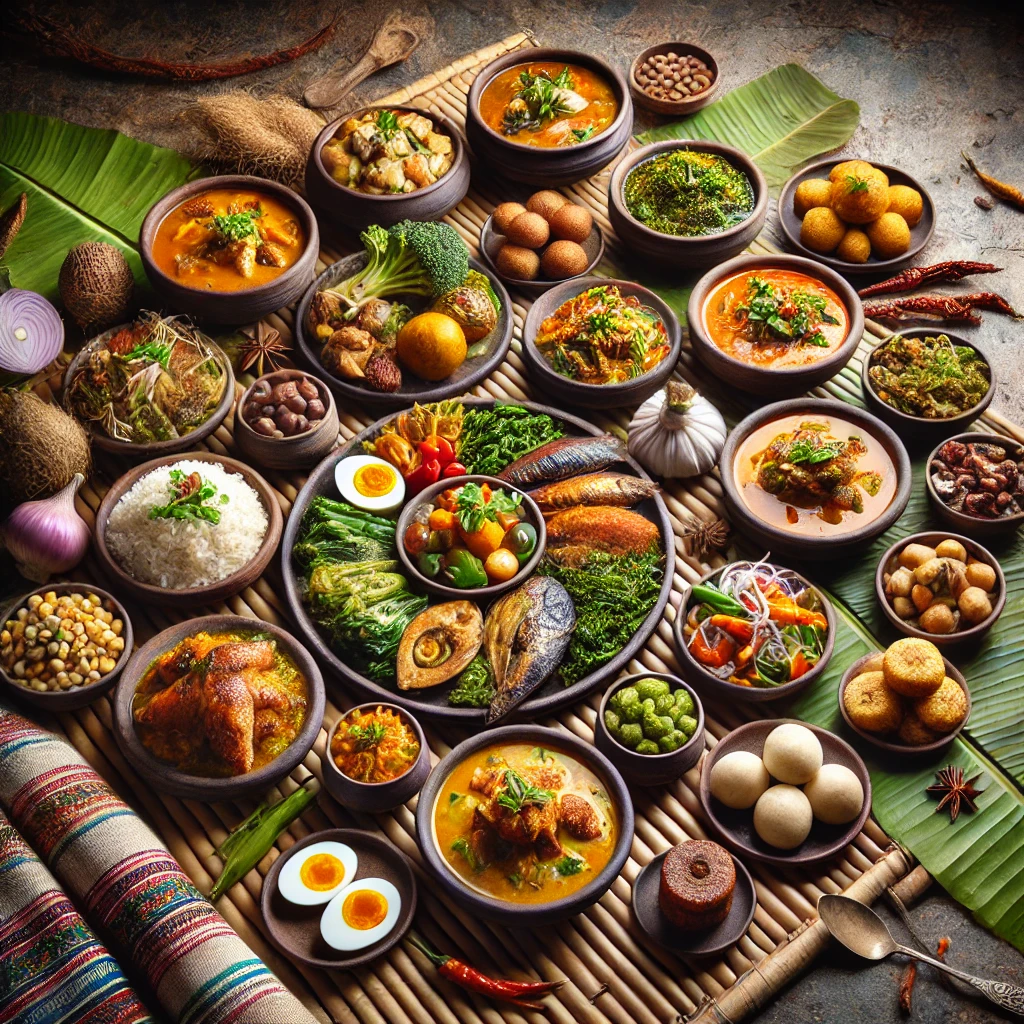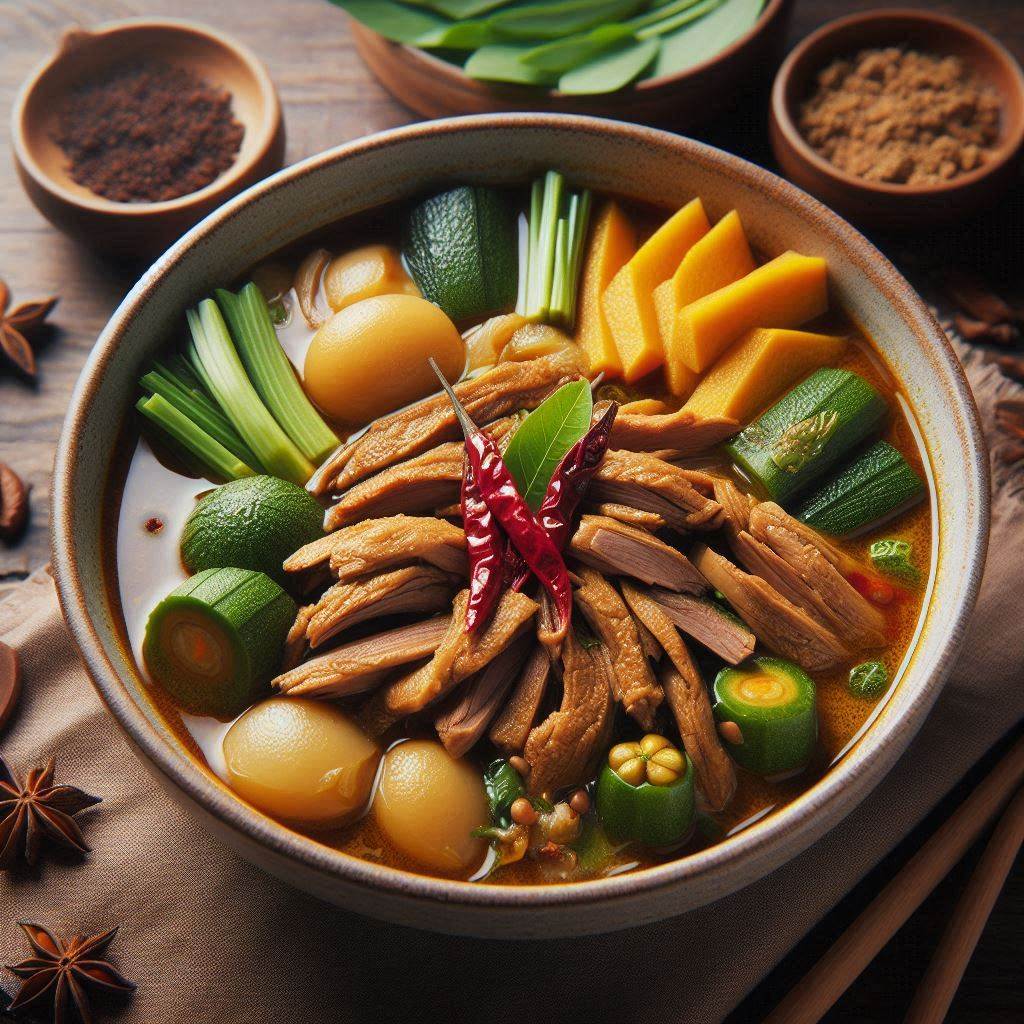Assam, known for its lush green tea gardens and scenic landscapes, is also home to a rich culinary tradition rooted in health and nutrition. Assamese cuisine combines locally grown vegetables, herbs, and spices, offering various flavors and essential nutrients. Let’s explore 10 traditional Assamese dishes that pack a nutritional punch, making them a wholesome choice for your diet.
1. Masor Tenga (Tangy Fish Curry)
A staple in Assamese households, Masor Tenga is a light and tangy fish curry cooked with tomatoes, elephant apple, or lemon. Known for being gentle on the stomach, this dish is rich in omega-3 fatty acids from fish, which supports heart health and reduces inflammation. The souring agents like tomatoes and lemon are high in vitamin C, boosting immunity.
2. Khar (Alkaline Vegetable Stew)
Khar is a unique alkaline stew made from raw papaya, banana peels, and pulses, cooked with sun-dried banana peel ash water. It aids in digestion, cleanses the gut, and has anti-inflammatory properties. The banana peel’s potassium and the papaya’s enzymes make this a heart-friendly and detoxifying dish.
3. Pitika (Mashed Vegetable Dishes)
Pitika is a simple dish made by mashing vegetables like potatoes, eggplant, or green leafy vegetables, often seasoned with mustard oil, green chilies, and onions. High in fiber, vitamins, and antioxidants, Pitika aids in digestion and helps maintain cholesterol levels.
4. Poitabhat (Fermented Rice)
Poitabhat is a traditional dish made by fermenting rice overnight, often enjoyed with raw onions, chilies, and a touch of salt. The fermentation process enhances probiotics, promoting gut health. It is especially beneficial in hot weather, as it cools the body and provides sustained energy.
5. Xaak Bhaji (Stir-Fried Green Leafy Vegetables)
Assamese cuisine includes various Xaak Bhaji or green leafy vegetable stir-fries like lai xaak (mustard greens), dhekia xaak (fiddlehead fern), and paleng xaak (spinach). These greens are nutrient-dense, rich in iron, calcium, and vitamins A, C, and K, supporting bone health and boosting immunity.
6. Duck with Kumura (White Gourd)
A festive favorite, Duck with Kumura is a rich and flavorful dish that combines duck meat with white gourd (kumura). Duck meat is high in protein, iron, and zinc, while white gourd is hydrating and low in calories. Together, they create a balanced meal perfect for celebrations.
7. Narikolor Laru (Coconut Balls)
Narikolor Laru is a dessert made with freshly grated coconut and jaggery. Coconut provides healthy fats, especially medium-chain triglycerides (MCTs), which boost brain health and improve energy levels. Jaggery, a natural sweetener, is rich in iron, helping prevent anemia.
8. Ou Tenga Dali (Elephant Apple with Lentils)
This tangy lentil soup is made with ou tenga (elephant apple), which adds a distinctive flavor and loads of vitamin C. Lentils are packed with plant-based protein and fiber, making this dish great for heart health and digestive health.
9. Pani Tenga Anja (Sour Fish Soup)
Another sour dish, Pani Tenga Anja is a fish soup cooked with elephant apple or lime, known for its light, refreshing taste. This soup provides a generous amount of protein from fish, along with the benefits of vitamin C and antioxidants from the sour ingredients.
10. Bora Saul Pitha (Sticky Rice Cake)
Made with sticky rice and jaggery, Bora Saul Pitha is a snack enjoyed during Assamese festivals. Sticky rice is high in complex carbohydrates, providing long-lasting energy, while jaggery is rich in minerals, adding to the dessert’s nutritional profile.
The Nutritional Benefits of Assamese Cuisine
These traditional dishes are not only delicious but also offer an array of health benefits. Assamese cuisine emphasizes balanced, nutrient-rich meals that aid digestion, improve immunity, and support heart health. Many of the ingredients are sourced locally, making them fresher and nutrient-dense. By including these dishes in your diet, you can enjoy the flavors of Assam while nourishing your body.
Click :- www.nutritionalgrowth.com
Linkedin :- Click



